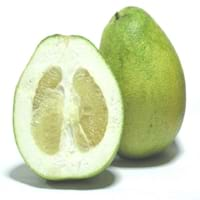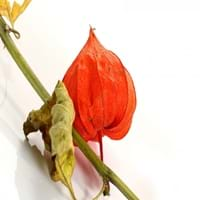Health Benefits
Cancer prevention, Heart care, Prevents Urinary Tract Infection
Anti-oxidant properties, Anti-inflammatory properties, Cancer prevention, Maintains healthy cholesterol level, Reduces blood circulation problems, Treatment of cough, fever & sore throat, Treatment of Hypertension
General Benefits
Digestive aid, Fights against infections, Flu treatment, Healing of wounds, Helps in weight loss, Treatment of common cold
Treatment of asthma, Treatment of cataract, Treatment of hepatitis, Treatment of macular degeneration, Treatment of neurodegenerative diseases
Skin Benefits
Anti-aging benefits, Brightens and lightens complexion
Treatment of Rheumatism & Dermatitis, Treatment of Skin Inflammation
Hair Benefits
Promotes longer and healthier hair, Protects hair
Unknown
Allergy Symptoms
Abdominal cramps, Abdominal pains, Diarrhea, Lightheadedness, Nasal congestion, Nausea, Swallowing difficulties, Swelling of mouth, tongue or lips, Vomiting
NA
Side Effects
Allergic reaction, Dizziness, Stomach pain
Hypertension, Ventricular Tachycardia
Best Time to Eat
As a snack in the late afternoon, Don't consume at night and before bed, Eat the fresh ones, avoid mixing with any other foods, don't eat after meal., Morning time (before lunch)
As a snack in the late afternoon, Eat the fresh ones, avoid mixing with any other foods, don't eat after meal., Morning time (before lunch), Strictly avoid empty stomach
Vitamin A (Retinol)
Not Available
Vitamin B6 (Pyridoxin)
Not Available
Vitamin C (Ascorbic Acid)
Vitamin E (Tocopherole)
Not Available
Water Content
Not Available
Calories in Fresh Fruit with Peel
Calories in Fresh Fruit without Peel
Not Available
Not Available
Calories in Frozen Form
Not Available
Not Available
Calories in Dried Form
Not Available
Calories in Canned Form
Not Available
Not Available
Calories in Jam
Not Available
Type
Citrus, Tropical
Fruit vegetable
Season
All seasons
Spring, Summer
Varieties
Chandler, Cocktail, Cuban Shaddock, Hirado Buntan, Honey, Jaffa Red, Mato Buntan, Pomelit, Reinking, Siamese Sweet and Sweetie
Physalis franchetii, Physalis pruinosa, Physalis peruviana, Physalis heterophylla and Physalis philadelphica
Color
Green, Pink, Red, Yellow
Bright Yellow, Orange
Inside Color
Creamy Yellow
Orange
Origin
Malaysia, South-Eastern Asia, Thailand
Chile, Peru
Soil Type
Clay, Loam, Sandy
NA
Climatic Conditions
Warm
NA
Facts about
- Flowers of pomelo fruit are used to make perfumes.
- Pomelo tree wood is used for the manufacture of tool handles.
- Life of pomelo tree is around 10 years.
- Height of pomelo can be 15-20 feet.
NA
Other Countries
Argentina, India, Israel, Mexico, South Africa, Sudan, Thailand, Turkey, United States of America
NA
Top Importer
Europe
Netherlands
Top Exporter
United States of America
Colombia
Botanical Name
Citrus maxima
Physalis Peruviana
Synonym
Citrus grandis
Alkekengi, Herschellia & Pentaphitrum
Subkingdom
Tracheobionta
Tracheobionta
Division
Magnoliophyta
Magnoliophyta
Class
Magnoliopsida
Magnoliopsida
Subclass
Rosidae
Asteridae
Order
Sapindales
Solanales
Family
Rutaceae
Solanaceae
Species
C. maxima
Physalis
Generic Group
Citrus fruit
Not Available
Difference Between Pomelo and Physalis
We might think that Pomelo and Physalis are similar with respect to nutritional value and health benefits. But the nutrient content of both fruits is different. Pomelo and Physalis Facts such as their taste, shape, color, and size are also distinct. The difference between Pomelo and Physalis is explained here.
The amount of calories in 100 gm of fresh Pomelo and Physalis with peel is 38.00 kcal and 77.00 kcal and the amount of calories without peel is Not Available and Not Available respectively. Thus, Pomelo and Physalis belong to Low Calorie Fruits and High Calorie Fruits category.These fruits might or might not differ with respect to their scientific classification. The order of Pomelo and Physalis is Sapindales and Solanales respectively. Pomelo belongs to Rutaceae family and Physalis belongs to Solanaceae family. Pomelo belongs to Citrus genus of C. maxima species and Physalis belongs to Physalis genus of Physalis species. Beings plants, both fruits belong to Plantae Kingdom.









